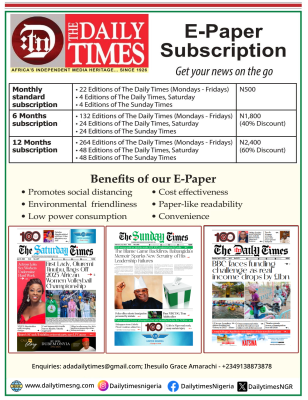A Game-Changing Plan

In 2017, President Muhammadu Buhari launched his ambitious Economic Recovery and Growth Plan (ERGP) to turn around Nigeria’s fate and position the country onto its path to sustainable growth.
Among the plan’s envisaged goals are 7% GDP growth, single-digit inflation, reduction in unemployment, and self-sufficiency in petroleum products by 2020.
After almost two years in office, in April 2017 the Nigerian President, Muhammadu Buhari, launched the much-awaited Economic Recovery and Growth Plan (ERGP) for 2017–2020
with the aim of turning around Nigeria’s dwindling economy and changing the country for good. During the launch, President Buhari introduced the program as one that,
“brings together all our sectoral plans for agriculture and food security, energy and transport infrastructure, industrialization and social investments together in a single document.”
The plan, which was laid out and mastered by the Ministry of Budget and National Planning, contains 60 initiatives expected to get Nigeria out of recession and place it on its path to growth.
President Buhari stated that, through the plan, the government is determined to turn Nigeria from a consumer to a producer.
In particular, the outlook for the plan includes a number of objectives: firstly, a stable macroeconomic environment, with inflation projected to decrease from 2017’s 19% to single-digit figures by 2020 and a stabilization of the exchange rate.
Secondly, the plan aims to reach 7% GDP growth compared to the 1.54% contraction recorded in 2016, representing a 4.6% average growth during the plan’s period.
Further development of agriculture and food security is another focus of the plan; over the three-year period, the sector is expected to grow by an average of 6.9%, and self-sufficiency is expected in tomato paste, rice, and wheat.
The fourth objective enunciated by the plan is self-sufficiency in power and petroleum products, with the goal to achieve 10GW of operational capacity and for Nigeria to become a net exporter of petroleum products by 2020.
Improving transportation infrastructure through strong partnerships with the private sector is another of the plan’s goals, followed by the industrialisation of the economy,
which will be achieved through the on-going strategies to improve Nigeria’s Ease of Doing Business, which in turn will boost manufacturing.
In fact, the manufacturing sector is predicted to grow from -5.8% in 2016 to 10.6% in 2020. Job creation, particularly youth empowerment, is the next step in the plan’s outlook, with the objective of reducing unemployment from 13.9% of 3Q2016 to 11.23% by 2020, or the creation of 15 million jobs.
Lastly, the plan aims to improve foreign exchange inflows, which will mainly be achieved through the aforementioned reduction and ultimately elimination of petroleum product imports, which will automatically reduce the demand for foreign currencies.
However, some may wonder how this plan differs from previous ones. Again, the Ministry of Budget and National Planning, in the plan’s introduction, explains how first and foremost, the ERGP is focused on implementation, and toward this end the political will and commitment are higher than ever before.
Other ways in which the plan is said to have a new approach are the fact that it outlines bold new initiatives such as increasing oil production and privatizing certain public assets;
it will involve a closer cooperation between public entities and the private sector, particularly with regards to the implementation of the plan.
Another differentiating factor is that the budget and planning functions of the government were united into one ministry to form a stronger link between annual budgets and the ERGP, as the Minister of Budget and National Planning, Senator Udoma Udo Udoma, explained to TBY, “We will make sure that we will mobilize resources to support the targets.
The budget, which this ministry is also responsible for, will be driven by this plan.” Lastly, what differs from previous plans is that each ministry will be held accountable for specific activities of the plan.
“For each of the executions that we have indicated, the key activities and for all activities, there is accountability. There is a ministry responsible, which will be held accountable.
That is different from the previous plans,” Minister Udoma told TBY during an interview.
Ms Yewande Sadiku, Executive Secretary of the Nigerian Investment Promotion Council, told TBY: “The ERGP has been widely applauded for its breadth and focus on addressing the areas where Nigeria needs to develop.
I think the full implementation of that plan should see Nigeria in 2018 not only well out of the recession, but developing the capacity and building the foundations that it needs for the next phase of growth and industrialization.
Minister Udoma is confident that in the first year after the plan’s launch, Nigeria will be able to reach its envisioned target of 4.8% growth.
Should this widespread optimism translate into positive growth figures, the ERGP will long be viewed as the plan that changed Nigeria’s fate and re-launched the country towards a stable, investor-friendly, and flourishing economy.








